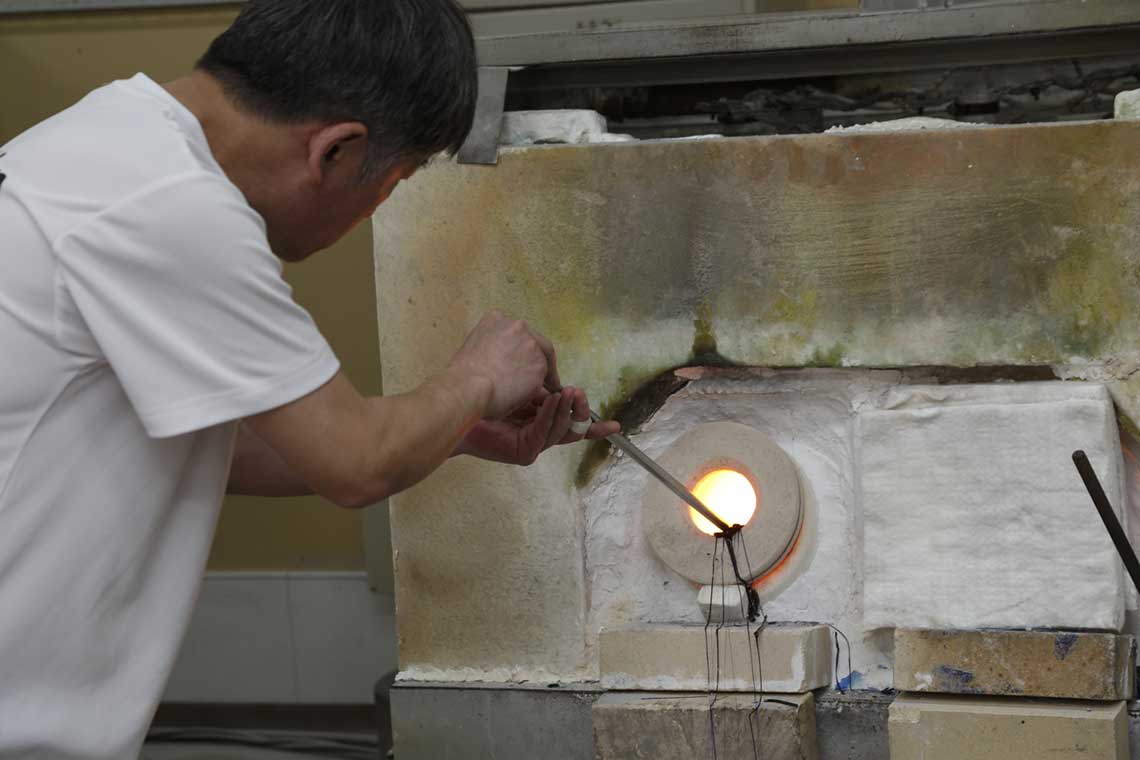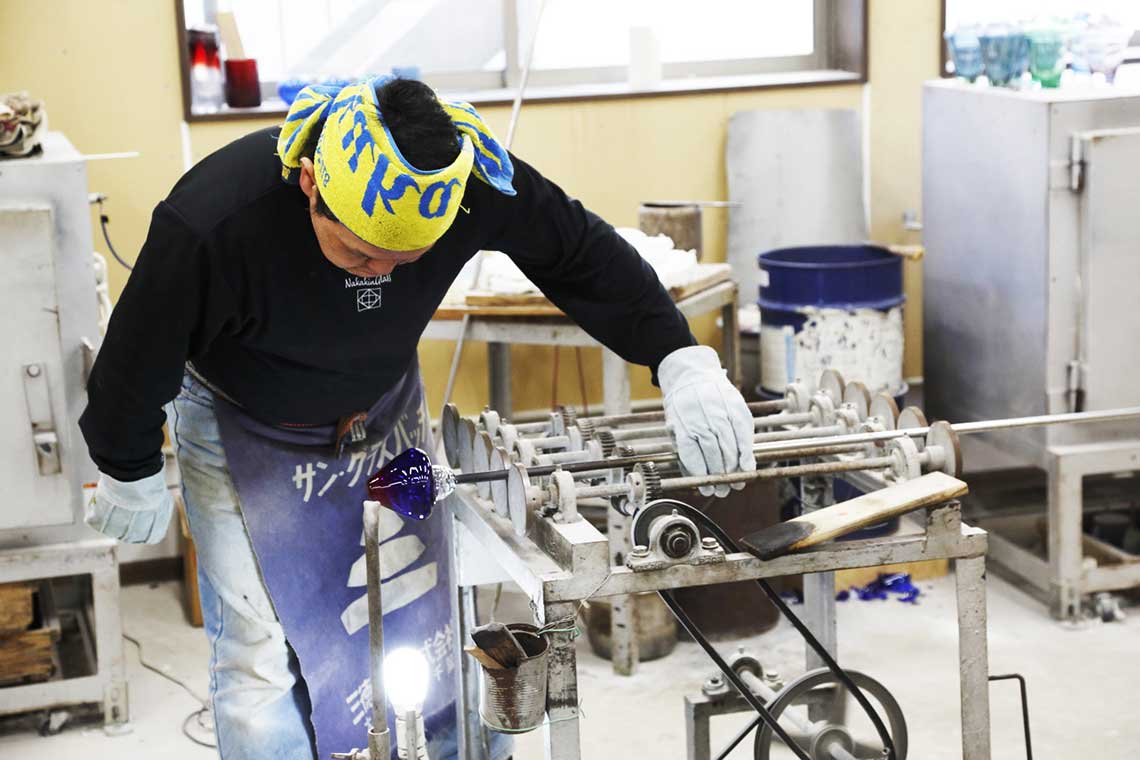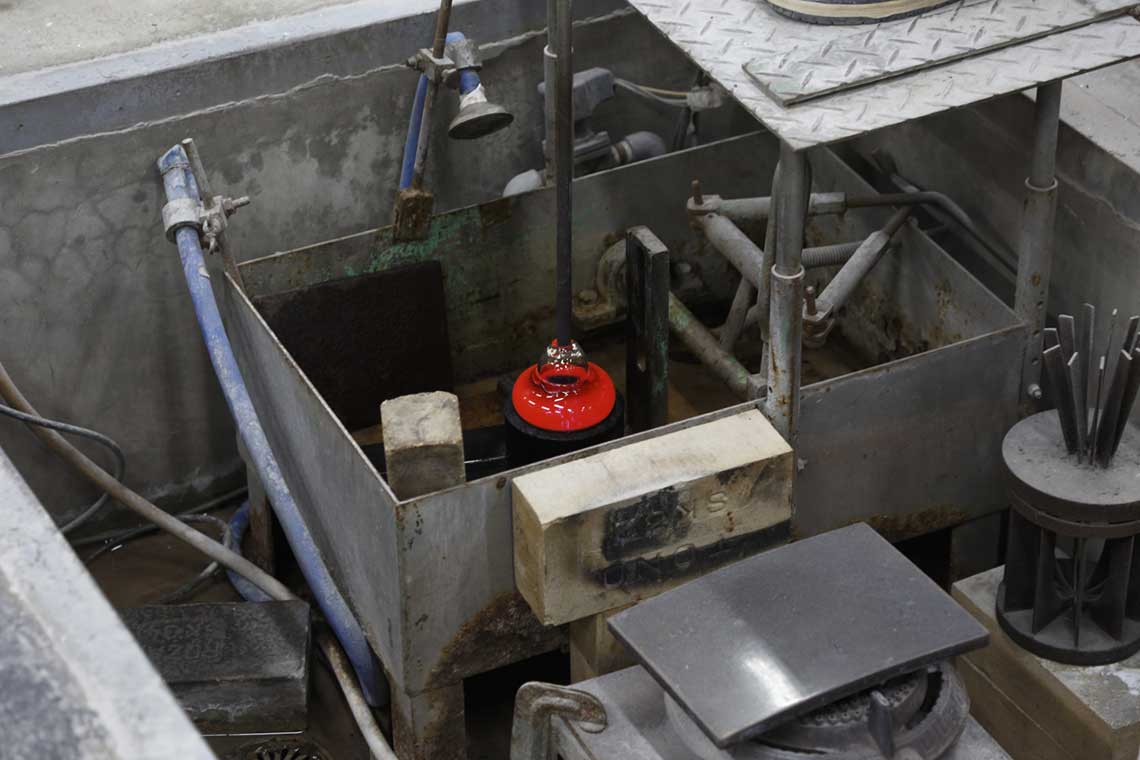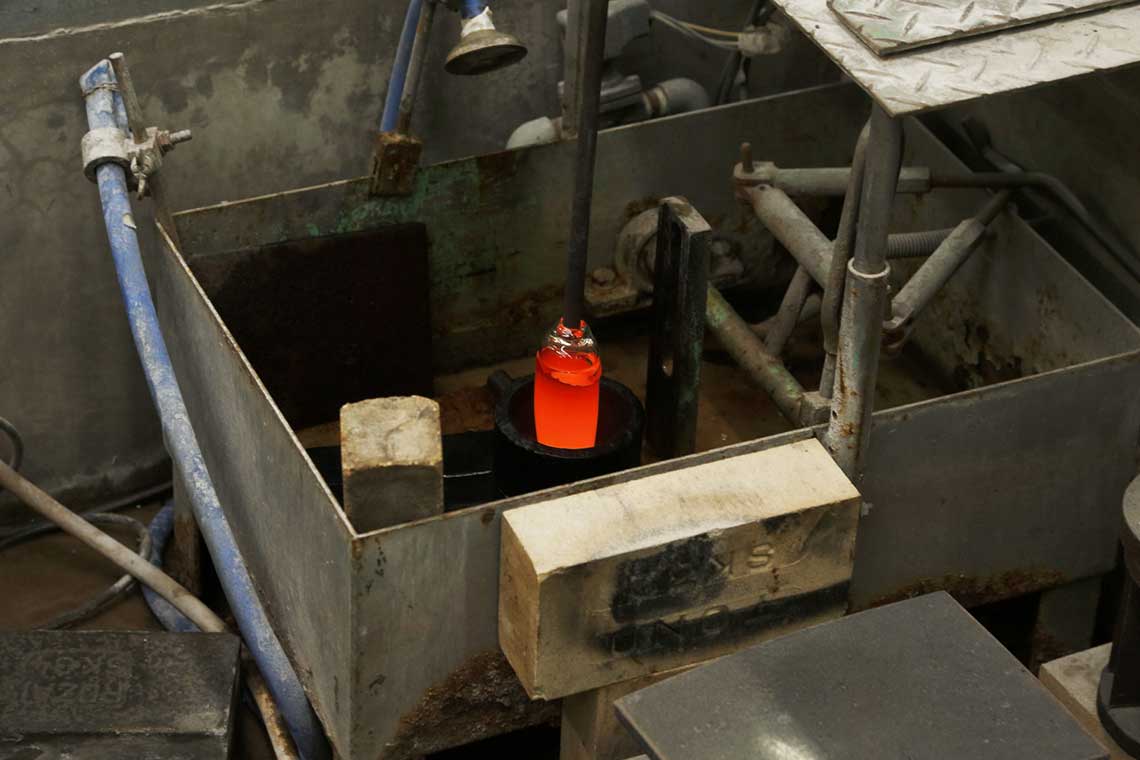The Fusion and Development of New Sensibilities and Traditional Craftsmanship
Edo glassware, born in the early 18th century as a hybrid of techniques introduced from China and Europe with Japanese craftsmanship,reached peak prosperity as a local industry in Tokyo by the end of the 19th century.

The skilled craftsmanship cultivated through intense training by artisans is renowned alongside Europe’s luxury crystal brands, and the name of Edo glassware in Tokyo, one of Japan’s premier glassware production areas, is gaining worldwide acclaim.

Nakakin Glass Inc. is the Nakakin Glass Workshop founded in 1946 (Showa 21) by its founder, Kingo Nakamura, in Edogawa City, Tokyo. Since its founding, the company has primarily manufactured Nakakin Irogise glass, which is characterized by layering two colors of glass through a blowing process, contributing significantly to the growing popularity of Edo Kiriko.


Kingo Nakamura, the founder, was the first person in Japan to develop the pokan method, a technique for crafting the beautiful Nakakin Irogise colored glass. A unique technique that was widely used involves blowing a thin layer of colored glass on the outer surface, placing it into a specially heated kiln, and then blowing glass of another color onto the inside.
In recent years, we have been committed to developing products that blend new sensibilities with traditional craftsmanship, including collaborative efforts with industry, academia, and government.
Atsushi Iwabuchi, Seigo Nakamura, Michiko Iwabuchi
2-11-29 Hirai, Edogawa-ku, Tokyo 132-0035
TEL: 03-3684-4611
info@nakakinglass.com
https://nakakinglass.co.jp/


